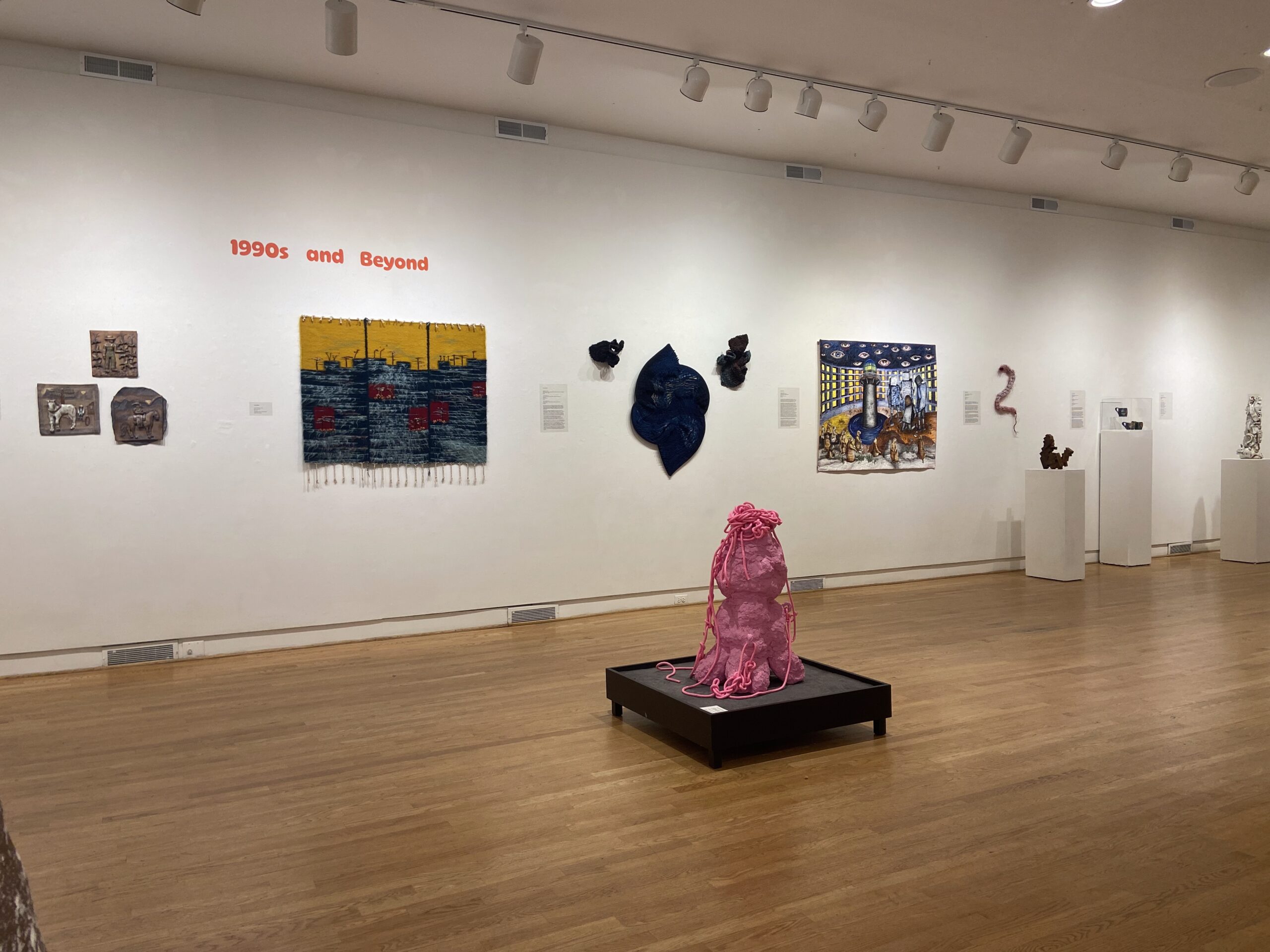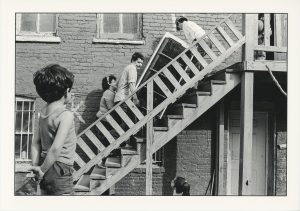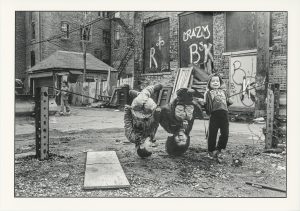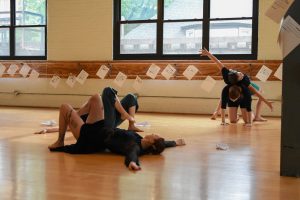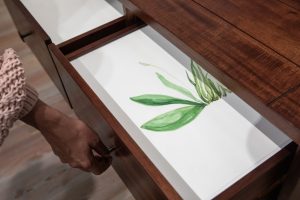When I spoke with Curator Adrienne Kochman of AGENCY: Craft in Chicago from the 1970s–80s and Beyond at the Ukrainian Institute of Modern Art, she half-jokingly, half-genuinely told me that this exhibition came from frustration. I knew exactly what she meant. During that time, craft was seen as somewhat of a secondary citizen in the contemporary art world. Even the phrase “arts and crafts” suggests that craft is placed on a lower level, inferring that craft is not the same as “art.” Self-taught artists of color working in craft media are faced with even more art jargon reinforcing an institutionally-affiliated and academic realm out of reach for many low-income, self-taught artists of color. For the already marginalized, craft became a space of reprieve, pushing artists towards it because of material costs.
“My upbringing [with] my mother [gave me] access to her artist colleagues such as Chicago Artist Coalition staff like Arlene Raconcay and art critic Victor Cassidy. [This experience] and my own art making exposed me to a community that was interconnected,” Kochman said. “I met or revisited a number of fiber artists through Lialia Kuchma and Nancy Feldman, advisors on [AGENCY]. I researched and interviewed all the artists, and I already knew of Juarez Hawkin’s work, which led me to other Black women ceramicists working at the Hyde Park Art Center (HPAC). The opening of the Center for Native Futures validated research I had already conducted on Indigenous artists in Chicago, as I could see their work in person. Studio visits and invitations to exhibit stemmed from all of these areas.”
Originating in England, the Arts and Crafts Movement began as a distressed response to post-Victorian rapid industrialization, concentrating on uplifting handicraft and rediscovering the beauty of organic, natural materials and simple design. Designer and architect C. R. Ashbee, a prominent figure in the Arts and Crafts Movement and founder of the Guild of Handicraft in England in 1888, said, “Chicago is the only American city I have seen where something absolutely distinctive in aesthetic handling of material has been evolved out of the industrial system.”1
Another distinguishing characteristic of Chicago’s Arts and Crafts Movement was its close ties to ongoing social advocacies. While the British movement primarily served as a call for aesthetic reformation, Chicago’s movement preserved its predecessor’s focus on nature, simplicity, and craftsmanship and utilized crafts as an effective outlet to express ongoing political changes, including women’s suffrage, gender equality, and the Civil Rights Movement by emphasizing historically marginalized voices. Instead of rejecting and criticizing the industrial world, Chicago’s craftspeople showed a more adaptive and experimental attitude toward artificial materials, such as industrial waste, while staying true to the movement’s essence of rediscovering organic, unprocessed, natural beauty.
Take the work of Judith Roston Freilich in the exhibition, for example. Her colorful textile work, filled with pastel colors, is made with hand-sewn wool, satin, velvet, and surgical tubing, morphing into a half-grotesque, half-fascinating organism. During a time when women were dismissed if they used pastel colors in their work, Freilich believed that these feminine, soft tones held as much significance as other hues in the world. She says, “Today, I see Untitled (1972) as a celebration of our younger self and our essence, deep inside, that journeys with us for a lifetime.”2 Embracing the young woman she was, adorning the colors she held close to her soul, she continues, “We carry our stabilizing inner self while our incredible spectrum of memories and experiences are forever reshaping our art and our lives.”3
The intense focus on personal voices and experiences also distinguishes Chicago in the American Arts and Crafts Movement. While the contemporary art world pursues the often incomprehensible, avant-garde for-shock-value, or profitable niches, craft affirms that the makers matter first and foremost. It embraces and validates our memories and stories without forcing a resonance with a higher meaning or a mainstream opinion. Craft angles our view to honor our father’s backyard and our mother’s cooking. Nothing is too small or too insignificant to become an inspiration.
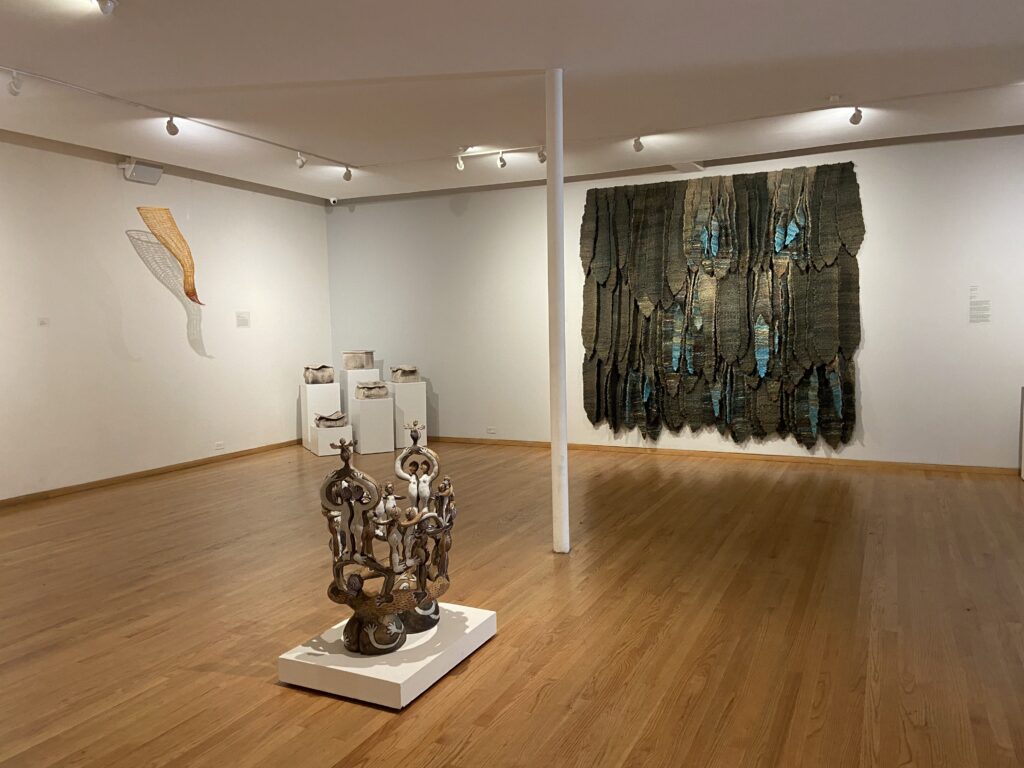
For example, Indigenous (Klamath, Paiute, and Modoc ) artist Noelle Garcia‘s stroller with bamboo sheets, wooden rods, and antler-based structure represents Indigenous values of child rearing: abundant in old memories, nature’s simplicity, and ancestral stories. Then, there’s the linen-and-sisal tapestry woven by Dorothy Hughes that hangs tall and encompassing on the gallery wall. Shades of brown, hickory, umber, and bright turquoise drape down like an earthly blanket. It’s heavy, in a safe and cuddly way. It’s also vibrant, like living, breathing tree barks or a nesting feathered bird about to wake up and soar into the sky.
“This fiber sculpture is completely influenced by the natural environment. As a child, I was surrounded by all kinds of plant materials. My father was a landscape architect, so the family lived with a nursery and greenhouse, all growing and vibrant,” Hughes wrote in her artist statement.
This re-focus onto the makers went hand-in-hand with the movement’s advocacy to reunite “art and labor, of artist and artisan.” One core discussion happens around finding a balance between commodity and artistic value. Artists are humans who need a roof over their heads and food in their bellies. The starving artist stereotype is often over-romanticized to justify lacking funding and insufficient fair-paying opportunities. Therefore, when the elites continue to preach art for art’s sake and scorn those desperately trying to sell two more paintings to make ends meet, craft acknowledges and respects the crafter’s fundamental needs for financial stability.
Glass blower Eric Bladholm, who straddles the line between creativity and commerciality in his flower vases, bowls, lamps, and holiday ornaments, sold out on the artist’s website. At the same time, Bladholm builds massive glass sculptures, such as Istočna Industrijska (Eastern Industrial), from the Istok Industrija series. The series is inspired by Bosnian culture. Using fabricated steel components, blown glass, and lost-wax-cast bronze, the sculpture combines industrial elements and botanical motifs. It is drastically different from the home decor Bladholm creates upon first glance. But the cultural inspiration, the natural references, the techniques, and the palette share fundamental similarities. Ultimately, it is up to the maker whether they will create a commodity or an art piece—or both, if the stars align.
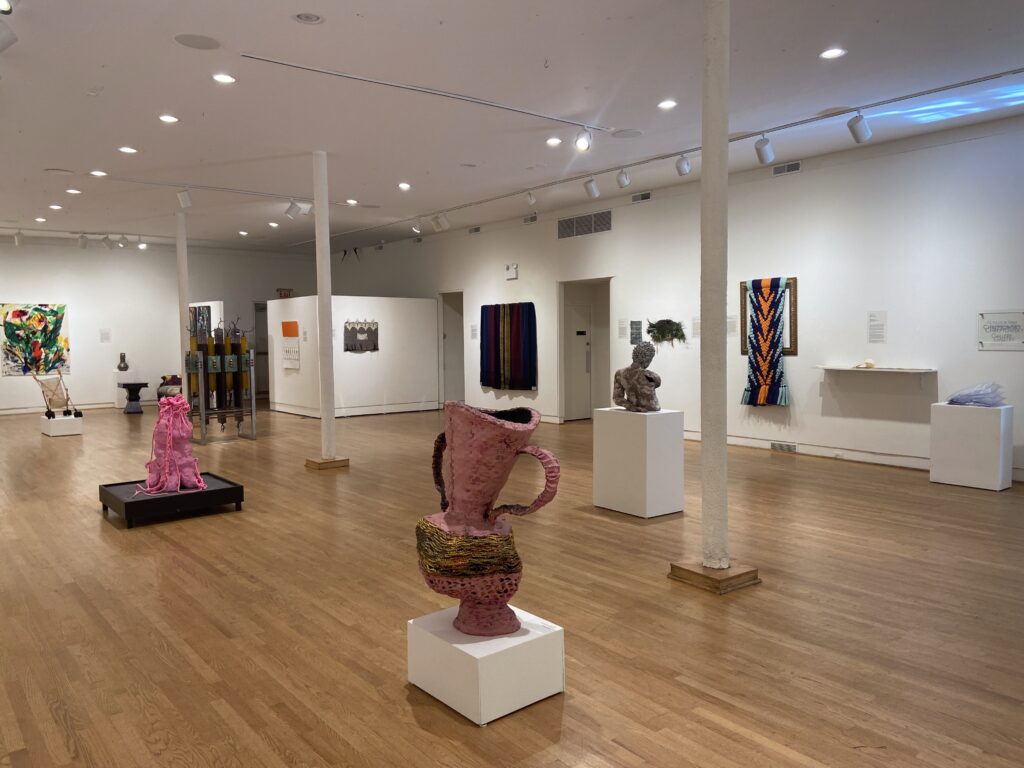
Over the past few years, more craft-driven exhibitions emerged in major cultural institutions, such as Desired Lines at the School of the Art Institute of Chicago (SAIC) in 2022, Echoes: Weaving Identity and Belonging at Zhou B Art Center in Bridgeport, Faith Ringgold: American People at the Museum of Contemporary Art, Chicago in 2023, and Woven Rhythms: Textile, Music, Motion at Evanston Arts Center in 2024. However, it’s important to remember that the community, collectiveness, and identity emphasized in contemporary textile exhibitions have been the focal point of craftspeople for decades, such as those featured in AGENCY.
When we talk about how art is meant to be liberating and compassionate, we continue a conversation our predecessors initiated in the 70s:
“Look, we’ve laid you so many stepping stones.”
“Look, we are continuing your work.”
As we look to the past for those who used craft to declare agency and admire their creations, we remind ourselves that our existence is honored and nurtured in the warm embrace of crafts.
“These artists do amazing work. Significant work. And they deserve to be seen.” Kochman said. “They are only getting older. The longer we wait, the fewer of them we will have. I wanted to bring their work together while they are still here.”
“AGENCY: Craft in Chicago from the 1970s–80s and Beyond” was on view from September 21, 2024 through January 26, 2025 at the Ukrainian Institute of Modern Art. The exhibition is presented as part of Art Design Chicago, a citywide collaborative initiative organized by the Terra Foundation for American Art. The exhibition is among more than 35 Art Design Chicago exhibitions that highlight Chicago’s unique artistic heritage and creative communities.
* * *
Works Cited:
- Editorial Staff. (October 21, 2009). “Chicago and the arts and crafts movement.” The Magazine ANTIQUES. https://www.themagazineantiques.com/article/chicago-and-the-arts-and-crafts-movement/ ↩︎
- Roston Freilich, Judith. (2024). “Individual Work Statements“. https://www.judithrostonfreilich.com/individualworkstatements ↩︎
- Ibid. ↩︎
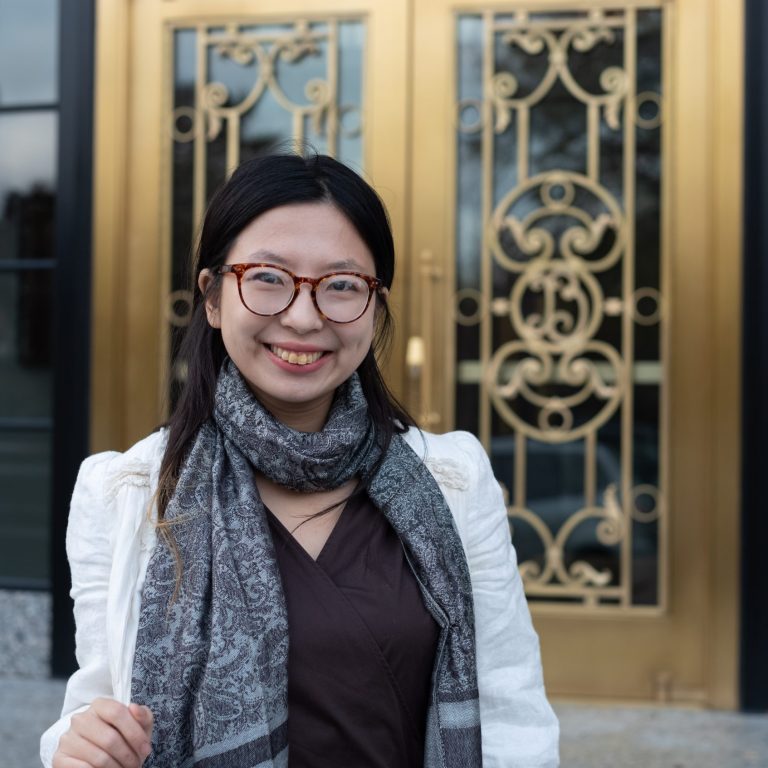
About the author: Xiao Faria daCunha is a practicing visual artist and an independent journalist covering what’s happening in the Midwest belt, focusing on lifestyle, art, and culture. Her visual art practice includes mixed-media illustration on paper, printmaking, and mixed-media collage. Xiao was the former Managing Editor for Urban Matter Chicago and her bylines have appeared in Chicago Reader, BlockClub, BRIDGE.CHICAGO, KCUR, The Pitch KC, and more. Xiao’s artistic and writing practice explores the intimate, vulnerable truth of the BIPOC, migrant, immigrant, and diaspora communities. She considers everything she does art journalism and aims to speak on behalf of those who haven’t been heard and shed light on what hasn’t been seen, whether it’s emotional, cultural, or societal. By weaving her personal experience with public narratives, Xiao creates emotional and engaging conversations to interrogate, challenge, and advance existing perceptions of women, Asian diasporas, and other immigration populations.
